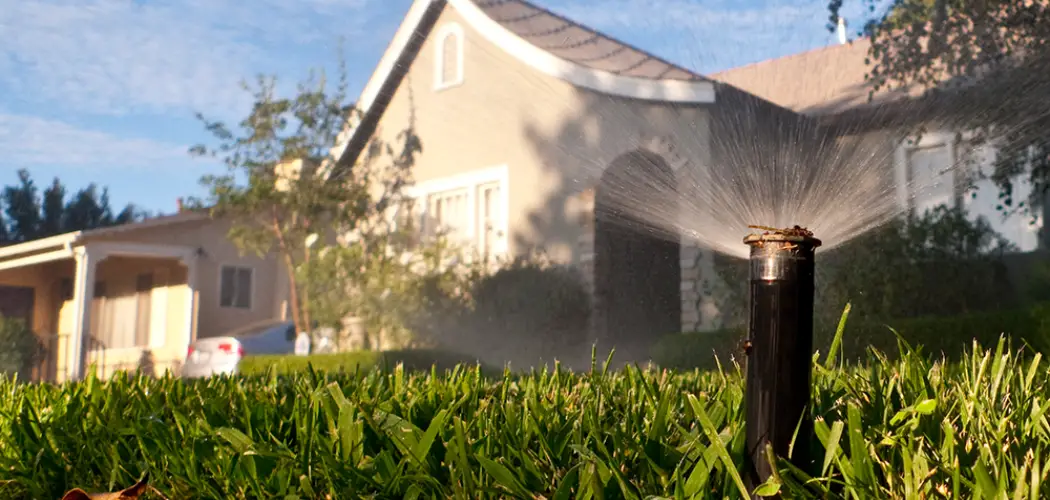Checking your sprinkler system is an essential task that should be regularly performed. A well-maintained sprinkler system ensures that your lawn and garden receive the necessary amount of water to thrive. It also helps you prevent costly repairs or replacements in the future.
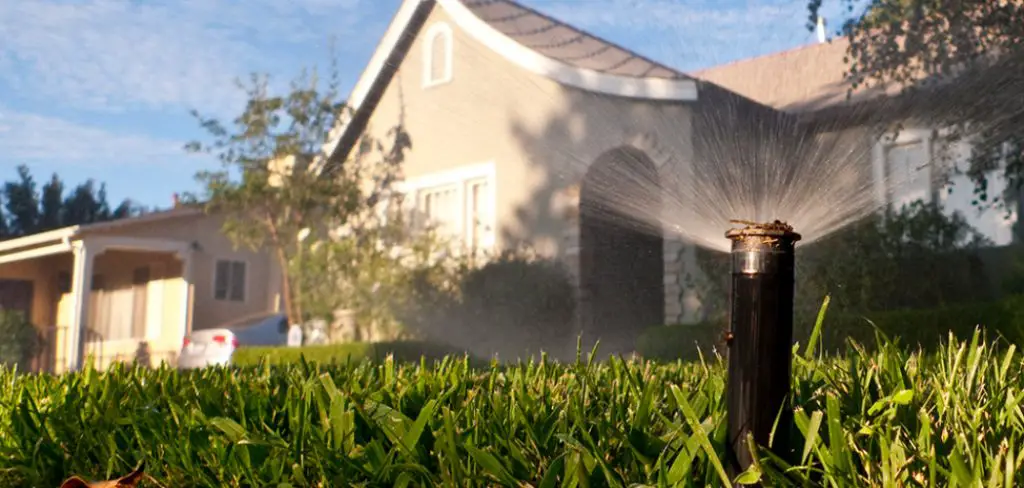
The main advantage of learning how to check your sprinkler system is that it saves you time and money. By identifying any issues with your system early on, you can prevent them from becoming more significant problems later.
This means you won’t have to spend a lot of money on costly repairs or replacements. You can find step-by-step instructions on how to check sprinkler system in this blog article.
Step-by-step Instructions for How to Check Sprinkler System
Step 1: Inspect the Sprinkler System’s Components
First, you need to inspect all the components of your sprinkler system. This includes checking for leaks, damaged pipes or heads, clogged nozzles, and broken valves. If there are any clogged nozzles found during inspection, clean them out using a small wire or a toothpick. Be careful not to damage the nozzle while cleaning it.
Step 2: Check Water Pressure
Next, you need to check the water pressure in your sprinkler system. You can use a pressure gauge for this task. The ideal water pressure should be between 30-50 psi (pounds per square inch). Check all the sprinkler heads, pipes, and valves for any leaks. If you find any leaks, repair them immediately to avoid wasting water and to maintain the efficiency of your system.
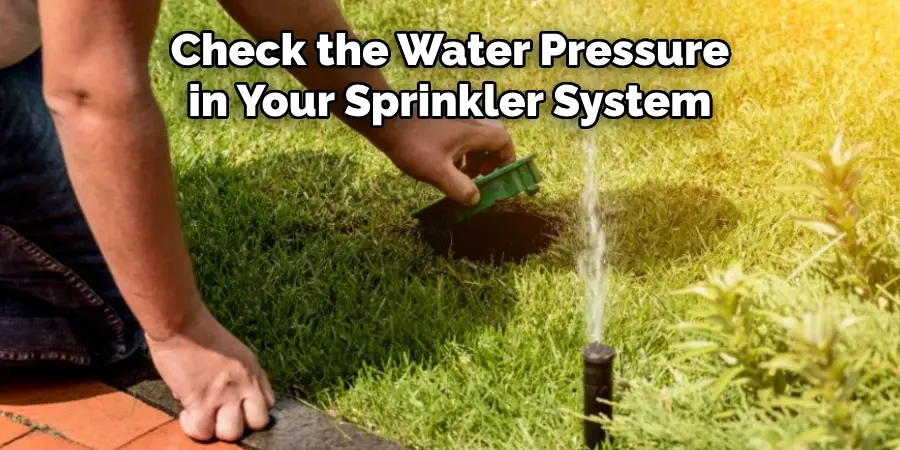
Step 3: Adjust Sprinkler Heads
Make sure that all the sprinkler heads are properly aligned and spraying in the desired direction. You can use a screwdriver or a wrench to adjust the sprinkler heads as needed. Check the settings on your sprinkler controller and make sure they are set according to your watering schedule. You may need to adjust the settings depending on the time of year or weather conditions.
Step 4: Test Each Zone
Manually turn on each zone of your sprinkler system and observe the spray patterns. Make sure that the water is reaching all areas of your lawn and there are no dry spots. While the sprinkler system is running, listen for any unusual sounds such as hissing or banging. These could indicate a problem with your system and may require further inspection.
Step 5: Time the Watering
Use a timer or clock to time how long it takes for each zone to complete one full rotation. This will help you determine if your system is watering for the appropriate amount of time. To ensure the longevity and efficiency of your sprinkler system, schedule regular maintenance checks at least once a year. This will help identify and fix any potential issues before they become major problems.
By following these 10 step-by-step instructions, you can effectively check and maintain your sprinkler system to keep your lawn looking healthy and green. Remember to also conserve water by adjusting your watering schedule according to the season or weather conditions.
Safety Precautions for How to Check Sprinkler System
1. Regular Maintenance
Sprinkler systems need regular maintenance to ensure that they are in good working condition. Regular inspections should be done every month, especially during the dry season when sprinklers are being used frequently. This will help identify any leaks, broken sprinkler heads or damaged pipes that need to be repaired.
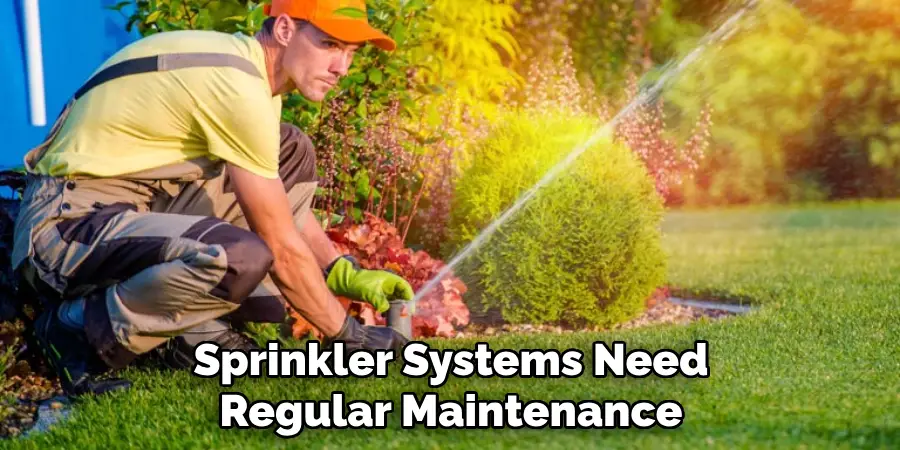
2. Keep Sprinkler Heads Clean
Make sure the sprinkler heads are clean and free from any dirt or debris. If they are clogged, they may not spray water evenly which can lead to dry spots in your lawn. Use a small brush or toothpick to remove any buildup on the sprinkler heads.
3. Adjust Sprinkler Heads
Check that the sprinkler heads are adjusted properly so that they cover the entire area efficiently. This will prevent overwatering in some areas and underwatering in others. Make sure the sprinkler heads are not blocked by any obstacles such as plants or furniture.
4. Check Water Pressure
The pressure of water flowing from your sprinkler system should be checked regularly to ensure it is within the recommended range. If the pressure is too low, it can lead to uneven watering and if it is too high, it can cause damage to the system.
5. Inspect Valves and Pipes
The valves and pipes in your sprinkler system should be inspected for any signs of leaks or damage. A leak can result in water wastage and a damaged pipe may lead to costly repairs. If you notice any issues with the valves or pipes, they should be repaired immediately.
6. Winterize Your Sprinkler System
Before the cold weather hits, make sure to drain out all the water from your sprinkler system and shut off the main valve. This will prevent any freezing or damage to the pipes during winter. You can also use an air compressor to blow out any remaining water in the pipes.
7. Hire a Professional
If you are unsure about how to check your sprinkler system or if you notice any major issues, it is best to hire a professional. They will have the necessary expertise and equipment to properly inspect and maintain your sprinkler system.

By following these safety precautions, you can ensure that your sprinkler system is in good working condition and provides efficient watering for your lawn. Remember to also follow any manufacturer instructions for maintenance and consult a professional if needed.
Importance of Checking Sprinkler System
1. Prevents property damage:
Having a functional sprinkler system is crucial in preventing property damage. A malfunctioning sprinkler system can result in uncontrolled fires that can cause significant damage to your property.
2. Ensures safety
The main purpose of a sprinkler system is to protect the occupants of a building from fires. Regularly checking and maintaining it will ensure that it functions properly during an emergency and help keep everyone safe.
3. Saves lives
According to the National Fire Protection Association, having a working sprinkler system can reduce the risk of death in a fire by 80%. Regularly checking and maintaining your sprinkler system is essential in ensuring its effectiveness in saving lives.
4. Complies with regulations
Most building codes require that commercial and residential buildings have a working sprinkler system. Regularly checking and maintaining your sprinkler system will ensure that you comply with these regulations, avoiding any potential legal issues.
5. Reduces insurance costs
Having a functional sprinkler system can also help reduce insurance premiums for your property. Insurance companies often offer discounts for properties with proper fire safety measures in place, including a well-maintained sprinkler system.
6. Saves money in the long run
Regularly checking and maintaining your sprinkler system can save you money in the long run. Small issues can be identified and fixed before they become costly problems, helping to avoid expensive repairs or replacement of the entire system.
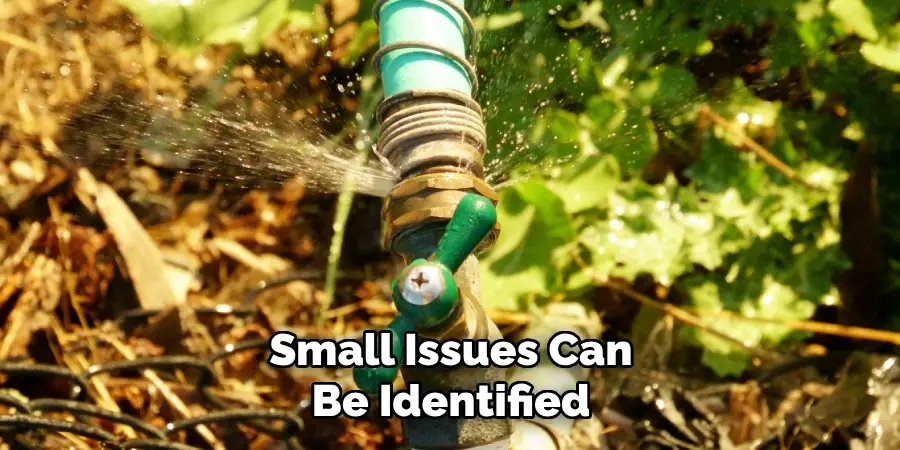
7. Peace of mind
Knowing that your sprinkler system is regularly checked and maintained can give you peace of mind. You can rest assured that your property and its occupants are protected in case of a fire emergency, reducing stress and worry.
Regularly checking and maintaining your sprinkler system is crucial for the safety and protection of your property, its occupants, and yourself. It not only helps prevent property damage but also ensures compliance with regulations, reduces insurance costs, and provides peace of mind. Don’t neglect this essential aspect of fire safety and schedule regular checks and maintenance for your sprinkler system today.
Benefits of Checking Sprinkler System
- Prevents Fire Damage: Having a fully functional sprinkler system can prevent fire damage to your property and potentially save lives. Sprinklers are designed to immediately activate when there is a fire, providing necessary water to extinguish the flames before it spreads.
- Lower Insurance Premiums: By regularly checking and maintaining your sprinkler system, you can lower your insurance premiums as it is considered a safety measure for your property. Insurance companies view well-maintained sprinkler systems as a way to reduce the risk of fire damage.
- Increases Property Value: A properly functioning sprinkler system can increase the value of your property, making it more attractive to potential buyers. This is especially important if you are looking to sell or rent out your property in the future.
- Saves Water: Regularly checking and maintaining your sprinkler system can actually save water. A malfunctioning sprinkler system may cause excessive water usage, resulting in higher bills. By keeping your system in good condition, you can ensure that it is using the appropriate amount of water to effectively maintain your lawn or garden.
- Reduces Maintenance Costs: Checking and maintaining your sprinkler system can help reduce future maintenance costs. By addressing any issues early on, you can prevent them from turning into larger and more expensive problems in the future.
- Preserves Landscaping: A well-maintained sprinkler system ensures that your lawn and garden receive the necessary amount of water to thrive without overwatering. This not only helps preserve the health of your landscaping, but also saves you from potentially having to replant or re-sod areas that have been damaged by overwatering.
- Peace of Mind: Regularly checking and maintaining your sprinkler system provides peace of mind knowing that it is functioning properly and will protect your property in case of a fire. This can help alleviate stress and worry, allowing you to focus on other important aspects of your life.
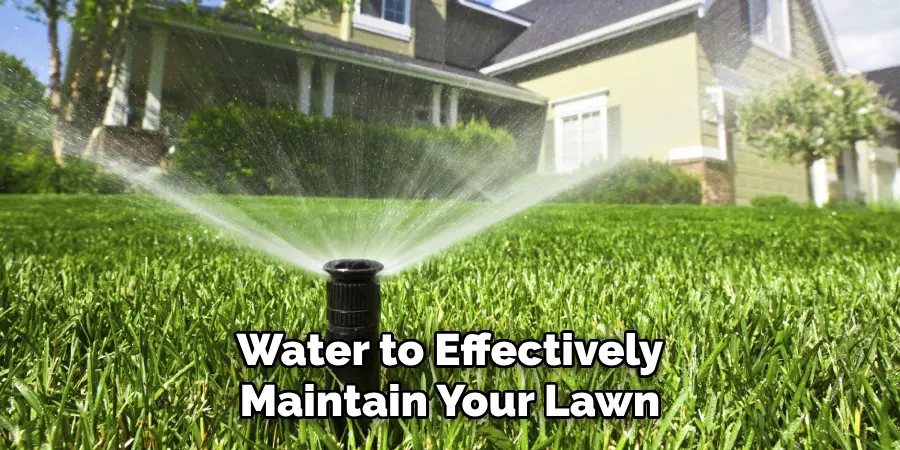
In addition to the benefits listed above, regularly checking and maintaining your sprinkler system also helps promote overall safety. A properly functioning sprinkler system can prevent fire hazards and water wastage, creating a safer environment for you and those around you.
Maintenance Plan After Checking Sprinkler System
- After conducting a thorough check on your sprinkler system, it is important to implement a maintenance plan to ensure its long-term functionality. Regular maintenance will not only save you money in the long run but also keep your lawn looking healthy and green. Here are some tips for creating an effective maintenance plan:
- Schedule Regular Inspections: It is recommended to have your sprinkler system inspected at least once a year by a professional. They can identify any potential issues and make necessary repairs before they become major problems.
- Adjust Sprinkler Heads: Over time, sprinkler heads may become misaligned or clogged with debris. It is important to regularly check and adjust the direction and range of each head to ensure proper coverage and avoid wasting water.
- Monitor Water Pressure: A drop in water pressure can indicate a leak or blockage in your system. Be sure to keep an eye on the water pressure and address any issues immediately to prevent damage to your sprinkler system.
- Clear Debris: Keep the area around your sprinkler heads clear of any debris such as leaves, dirt, or grass clippings. This will help maintain proper water flow and prevent clogging.
- Check for Leaks: Inspect your sprinkler system regularly for any leaks or broken pipes. If you notice any signs of water pooling, soggy spots in your lawn, or a sudden increase in your water bill, it could be a sign of a leak that needs to be addressed immediately.
- Winterize Your System: Before the cold winter months arrive, be sure to properly winterize your sprinkler system to avoid any damage from freezing temperatures. This includes draining all water from the pipes and shutting off the water supply.
- Keep Records: It is important to keep a record of any maintenance or repairs done on your sprinkler system. This will help you keep track of any issues that may arise and make it easier to troubleshoot in the future.
- Consider an Irrigation Controller: Installing an irrigation controller can help automate your sprinkler system, making it more efficient and reducing water waste. Some controllers even have sensors that can detect rain, preventing unnecessary watering.
- Professional Maintenance: While there are some maintenance tasks you can do on your own, it is always beneficial to have a professional come in and conduct a thorough maintenance check every few years. They can identify any issues that may go unnoticed and ensure your sprinkler system is running at its best.
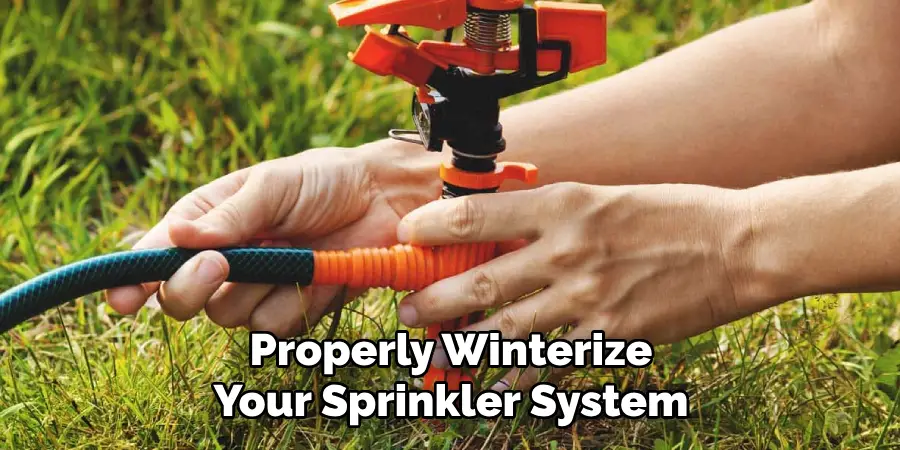
By following these tips and creating a regular maintenance plan, you can prolong the lifespan of your sprinkler system and keep your lawn looking lush. Don’t wait until something breaks to take action – prevention is key when it comes to maintaining your sprinkler system. Keep these tips in mind and enjoy a beautiful, healthy lawn all year round.
Conducting a Pressure Test After Checking Sprinkler System
After checking your sprinkler system, it is important to conduct a pressure test to ensure that the system is functioning properly. This will help you identify any issues or leaks in the system and make necessary repairs before an emergency arises.
To start, gather all necessary equipment including a pressure gauge, wrench, and a stopwatch. Begin by closing all control valves on the main supply line and then opening the test valve. This will simulate a discharge of water from your sprinkler system.
Next, attach the pressure gauge to one of the sprinkler heads and slowly open the control valves on the main supply line. Observe the pressure reading on the gauge and record it. The pressure should be within 10% of what is recommended by your system’s manufacturer. If it is significantly higher or lower, this could indicate a problem with the system.
Once you have recorded the pressure reading, close the control valves and turn off the main water supply. Remove the pressure gauge and reattach any sprinkler heads that were removed for testing purposes.
It is important to ensure all sprinkler heads are securely attached to prevent leaks. If any issues were identified during the pressure test, it is important to make necessary repairs before using your sprinkler system. This includes replacing any damaged or faulty parts and ensuring all control valves are functioning properly.
Testing Rain and Moisture Sensors for Checking Sprinkler System
There are several types of rain and moisture sensors that can be used to check the efficiency of a sprinkler system. These sensors detect rainfall or soil moisture, allowing you to adjust your irrigation schedule accordingly. One type of sensor is the rain sensor, which measures the amount of rainfall in an area. This information is then sent to the sprinkler controller, which stops watering if the rainfall is sufficient. This prevents overwatering and helps conserve water resources.
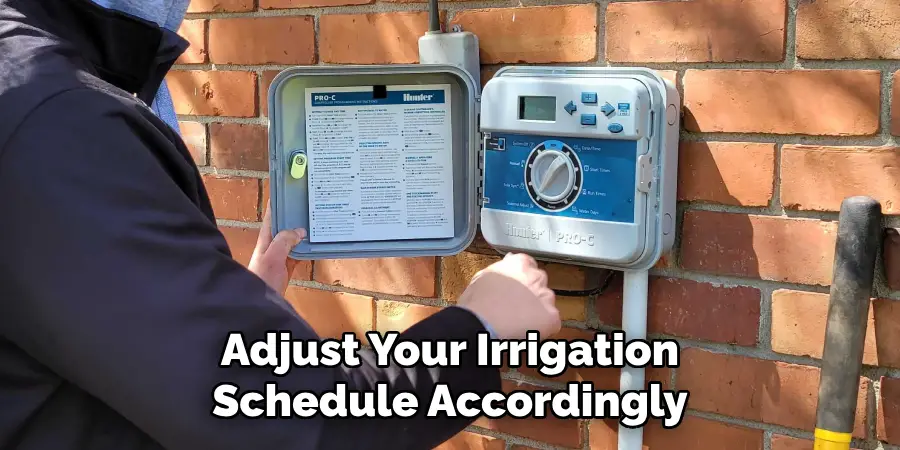
Another type of sensor is the moisture sensor, which measures the moisture content in the soil. This allows you to determine if your sprinkler system is providing enough water for your plants. If the moisture level is too low, you can adjust your irrigation schedule to provide more water.
In addition to these sensors, there are also weather-based sensors that use real-time weather data to adjust irrigation schedules. These sensors take into account factors such as temperature, humidity, and wind speed to determine the watering needs of your plants.
It is important to regularly test these sensors to ensure they are functioning properly. This can be done by manually activating the sensor or using a controller that has a manual test function. If the sensor does not trigger the sprinkler system, it may need to be adjusted or replaced.
Regular maintenance and testing of these sensors can save you time and money in the long run. By accurately detecting rainfall and soil moisture levels, you can avoid overwatering your plants and prevent water waste. This also ensures that your plants are receiving enough water for healthy growth.
Conclusion
In conclusion, knowing how to check your sprinkler system can save you a lot of time, money and effort. However, there are also some disadvantages to be aware of when it comes to maintaining your sprinkler system.
One major disadvantage is the potential for equipment failure. If your sprinkler system is not regularly checked and maintained, it may malfunction or break down completely. This can result in wasted water, a damaged lawn, and costly repairs.
Another disadvantage is the risk of overwatering. If you are not careful when setting your sprinkler system schedule or adjusting the heads, you may end up watering your lawn too much.
This can lead to unnecessary expenses on your water bill and potential damage to your plants and grass. I hope this article has been beneficial for learning how to check sprinkler system. Make Sure the precautionary measures are followed chronologically.

